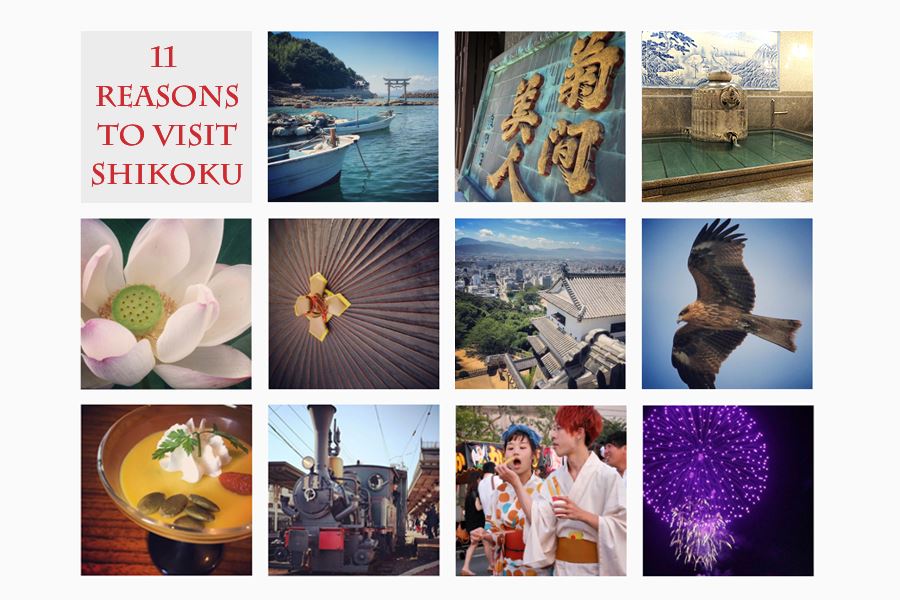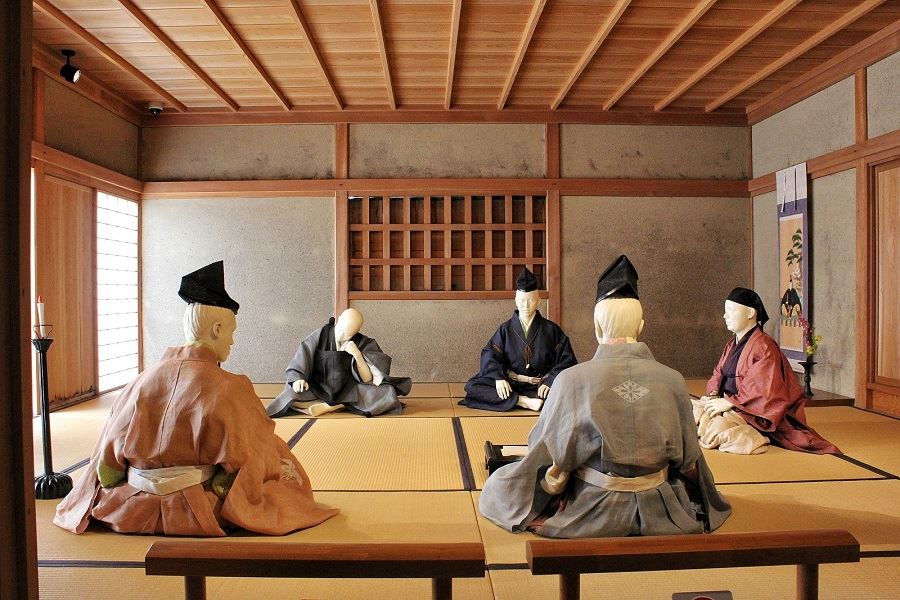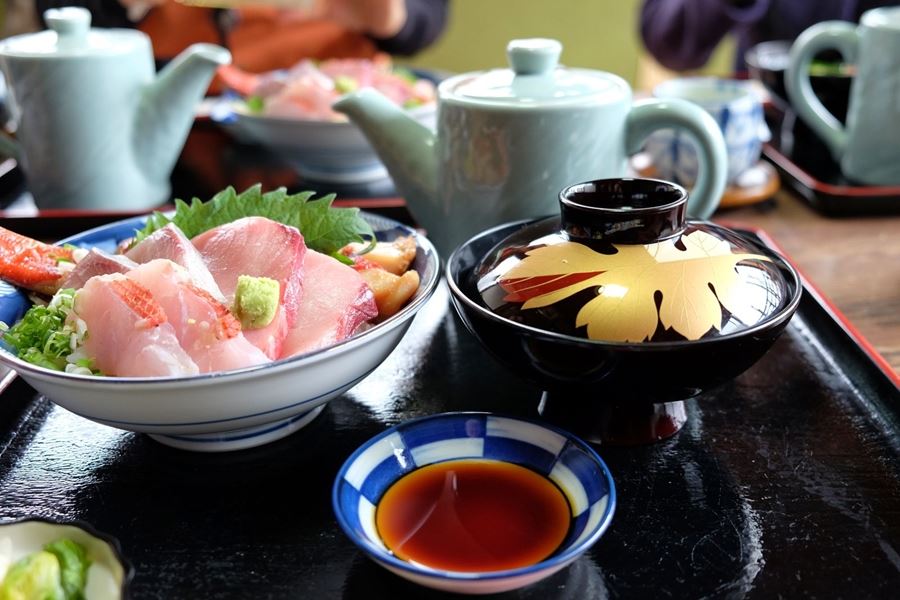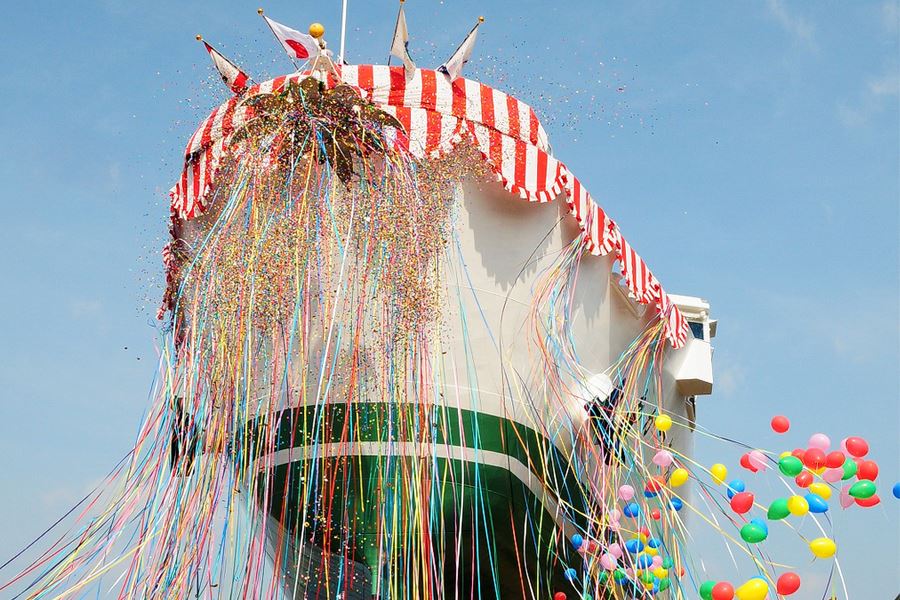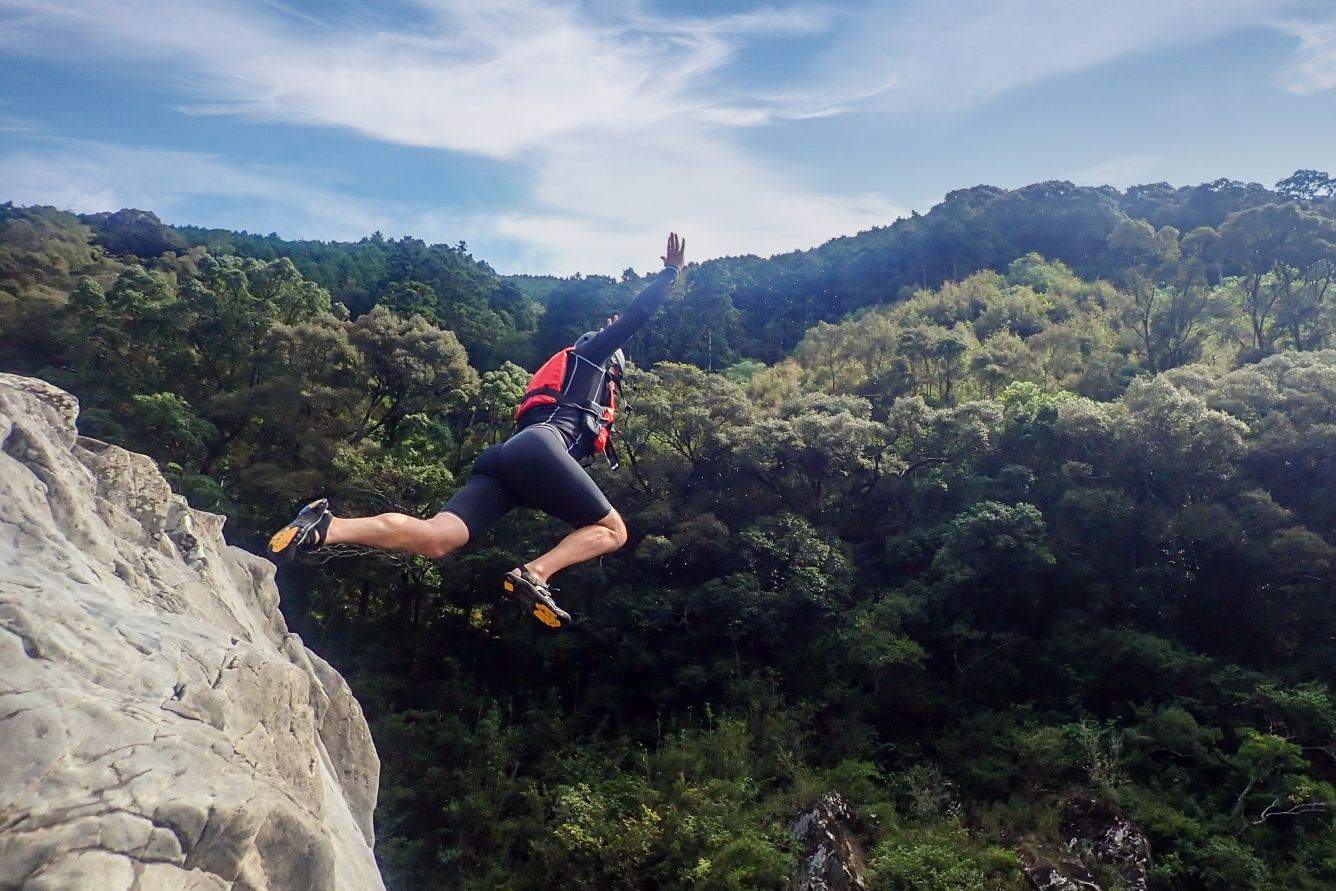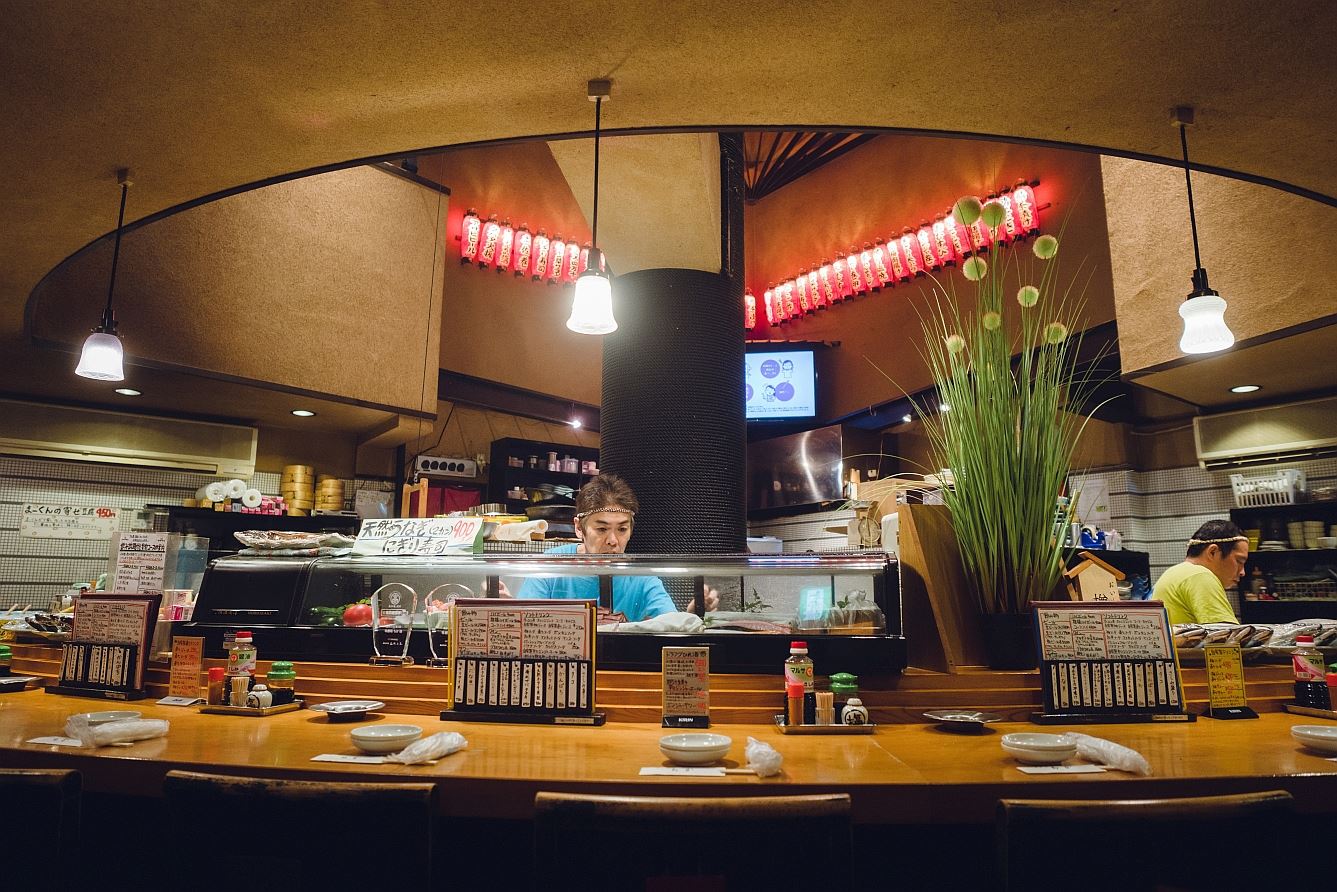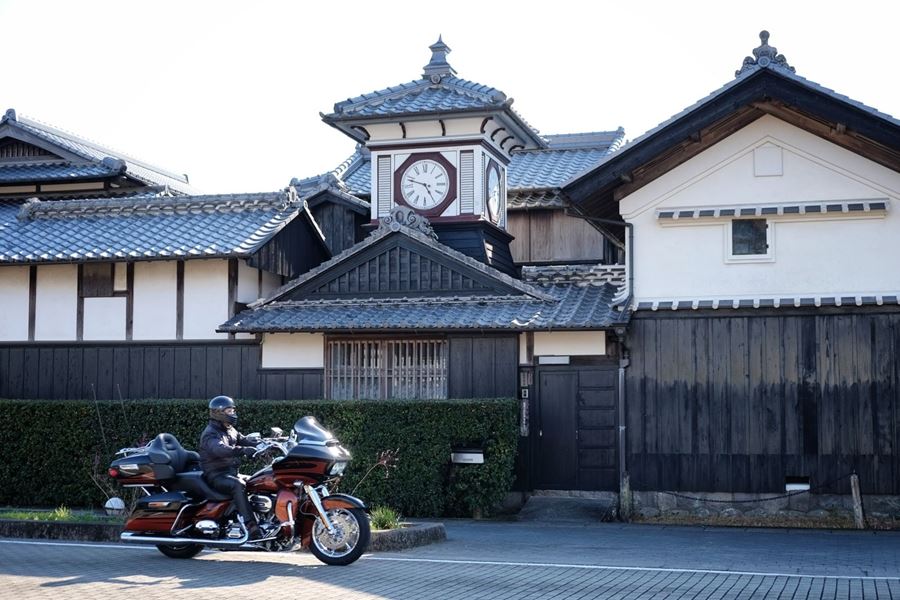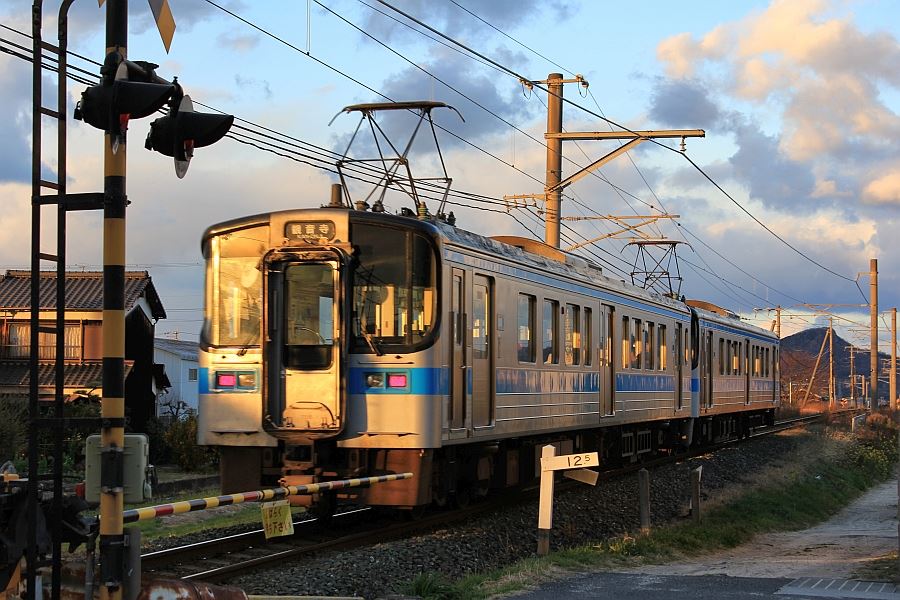Muroto, Kōchi
Home » Muroto, Kōchi
Muroto, Kōchi
The Muroto Peninsula forms the southwest part of Shikoku, coming to an acute point in the Pacific Ocean. Part of Kochi Prefecture, the southernmost tip of the peninsula goes by the name Muroto City, although it’s a very rural area with no urban agglomeration bigger than a small town.
The Muroto Unesco Global Geopark
Muroto is a Geopark, which is defined as a unified area that advances the protection and use of geological heritage in a sustainable way, while ensuring the economic well-being of the people who live there. The concept includes promoting awareness of geological hazards like earthquakes and tsunamis, along with disaster mitigation strategies. Geoparks aim to implement community-based green tourism, based on sustainable use of natural resources. Volunteer guides in Muroto include fluent English speakers. They study constantly to improve their knowledge and to enhance the experience of visitors. The Muroto Global Geopark Center has exhibits with English, explaining the features of the area.

Whale Watching
The coastline of Kochi Prefecture is in the path of migrating whales of many varieties, and you can charter a fishing boat from a port in Muroto to watch the whales. The water off Kochi is exceptionally clear, so you can see these majestic creatures even when they’re submerged. On any given trip, you’re likely to see Bryde’s whales, Risso’s dolphins, Bottlenose dolphins and flying fish. Of course, cetacean sightings aren’t guaranteed, but operators claim more than a 90% chance of seeing some sort of marine mammal. Most operators offer charter of a single boat for a set fee of around 20,000 yen for about two hours. Groups range in size from one to about twenty people. Shikoku Tours can make you a package of transport, whale watching and accommodation. The season runs from April to September.
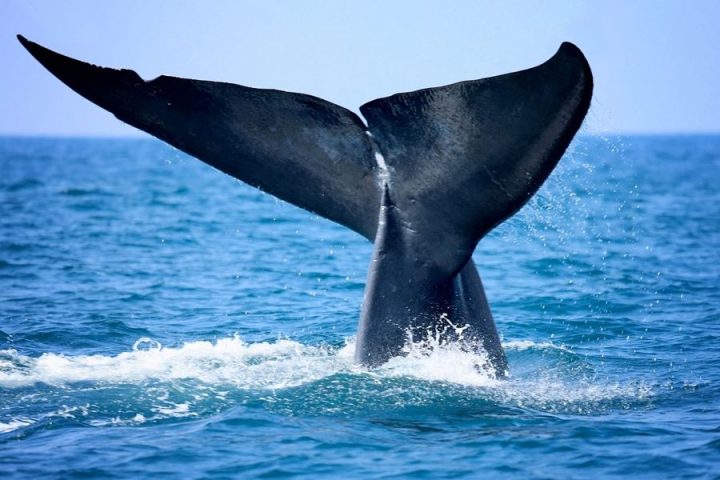
Kiragawa
The town of Kiragawa is one of the jewels of Muroto. Its streets are lined with houses built in the Meiji and Taisho periods, around the turn of the last century. The houses are made to withstand the strong wind and rain of the typhoons that sometimes lash the area from late summer to autumn. Small tiles are laid into the walls in rows, which cause the rain to run off the walls instead of seeping into the plaster. The roof tiles are all laid so that the gaps between them face west, away from the rain that drives in from the east. You can observe this by looking at the north and south sides of any building. The houses are enclosed in thick stone walls, built in a unique style not found in other regions.
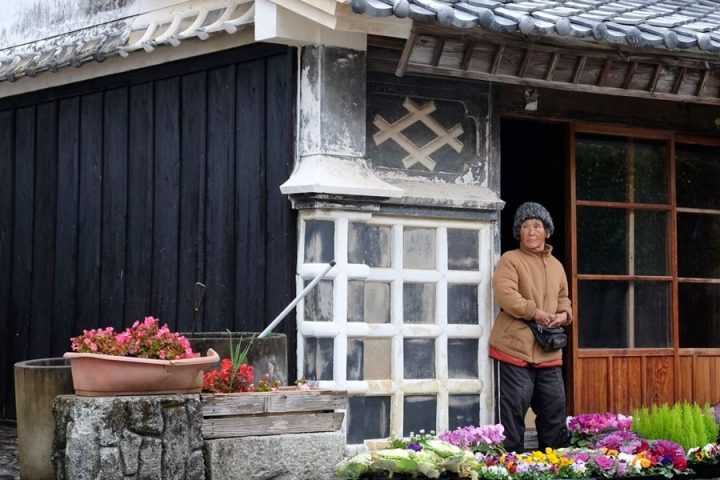
If you want to stay in Kiragawa (and you should!), Kadoya, a Japanese-style inn built in the 1930s, is the ideal place. It combines the elegance and comfort of sleeping in a futon on tatami, with modern bath, toilet and kitchen facilities, without the expense of typical ryokan accommodation.
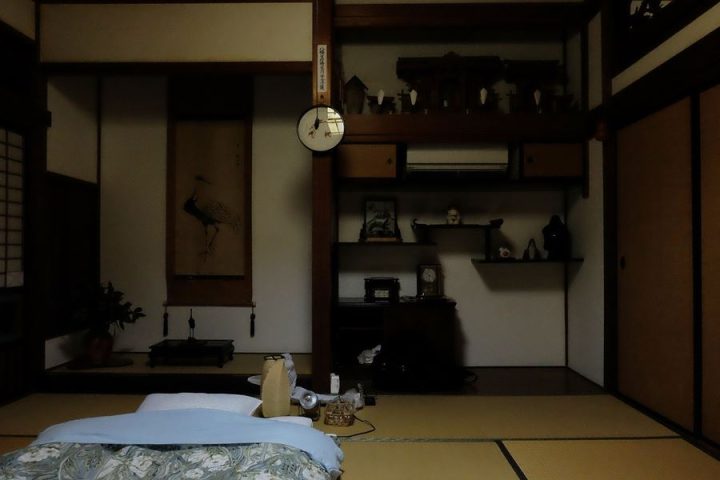
Kiragawa rewards several hours of wandering about. The town is built on several elevations, each of which presents a different aspect. There are several buildings that you can enter and look around, such as the Kiragawa Machinamikan museum.
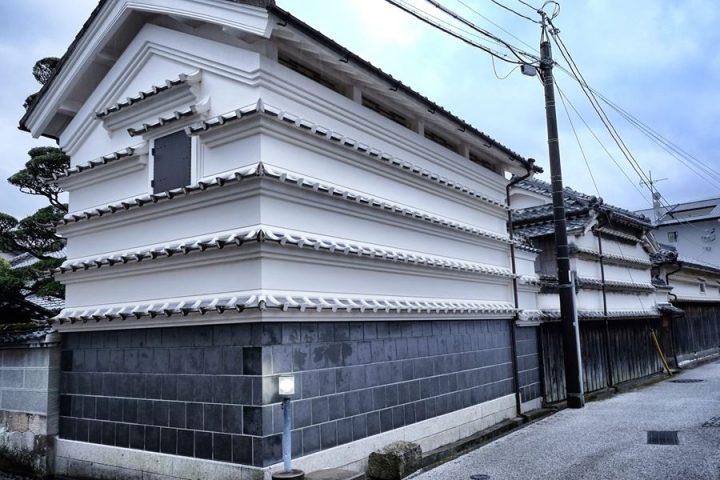
Binchotan Charcoal
Kiragawa prospered through the production of a special kind of charcoal called binchotan. This hardwood charcoal is very dense and burns at a lower heat than other charcoal with no smell, making it particularly suitable for charcoal grilling. Demand for binchotan is strong, and there are still working charcoal kilns around Kiragawa which you can visit. The production process requires at least two years to learn, and the fine temperature adjustments made during production are all based on the smell of the smoke emerging from the kiln.
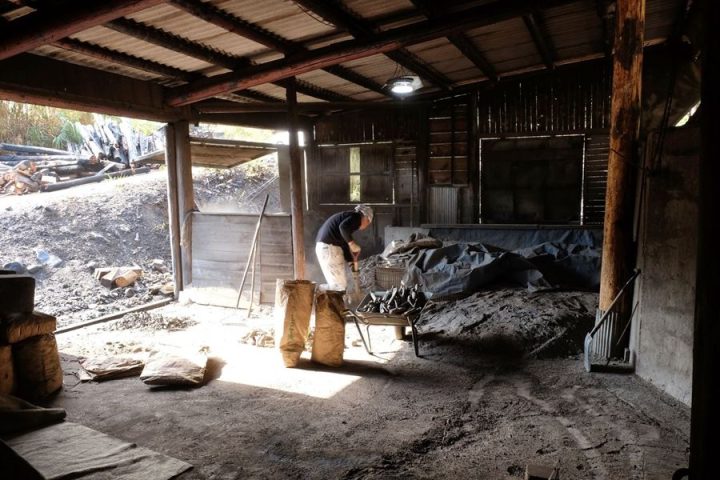
Muroto Rocks
Muroto’s dramatic coastline was formed through an ongoing process where the layers of ossified sediment on the seafloor are thrust up and exposed by the forces of continental drift. The rocky beaches of the seashore constantly change shape with the action of the weather and tides. Some of the geological features have been attributed to the mendicant priest Kukai, founder of the Shikoku Pilgrimage, fifteen centuries ago. Pits in the rock are said to be where his staff struck, and wave marks above a rock pool are where he rubbed his back when he bathed there.
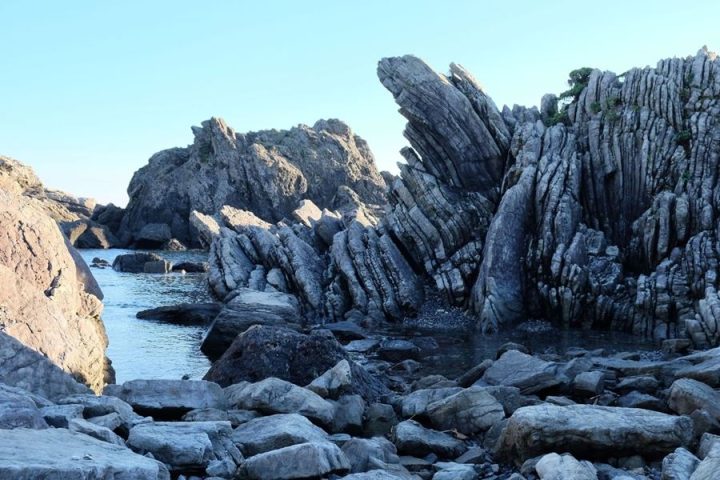
Statue of Kukai
There are several other monuments to Kukai in Muroto, the most obvious being a giant white statue of him as a young man. He has a most stern expression, and the white contrasts starkly with the green mountain behind it. The temple below the statue is used for training new priests.
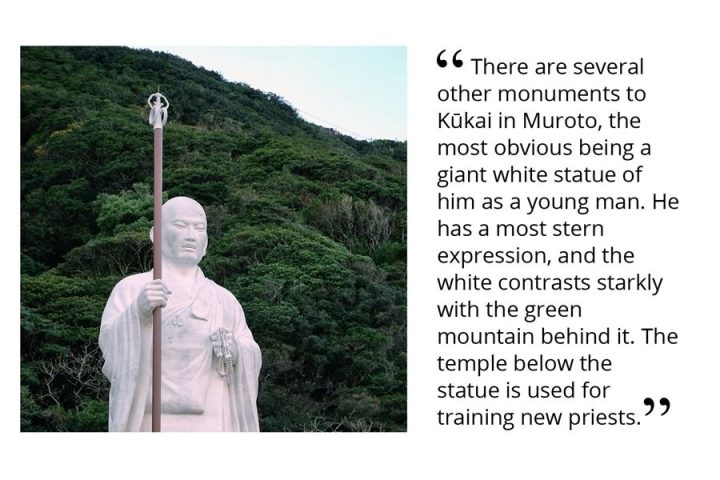
There are also the Mikurodo and Shinmei caves where the young Kobo Daishi is said to have attained spiritual enlightenment in the Heian period, about 1,200 years ago. It’s said that Kobo Daishi changed his name to Kukai after being moved by the sky (“ku”) and the sea (“kai”) which he could see from the cave.
Hotsumisaki-ji Temple
As one of the eighty-eight pilgrimage temples of Shikoku, Hotsumisaki-ji Temple is also associated with Kukai. It’s Temple No. 24. This beautiful temple stands in rich woodland close to the tip of Cape Muroto. In the grounds is a large boulder with several indentations. If you pick up one of the pebbles lying around and strike the boulder, it produces high, ringing notes. After visiting Hotsumisaki-ji, you can return to the car park via the path behind the temple which women, who were forbidden from entering temples in the old days, were obliged to use.
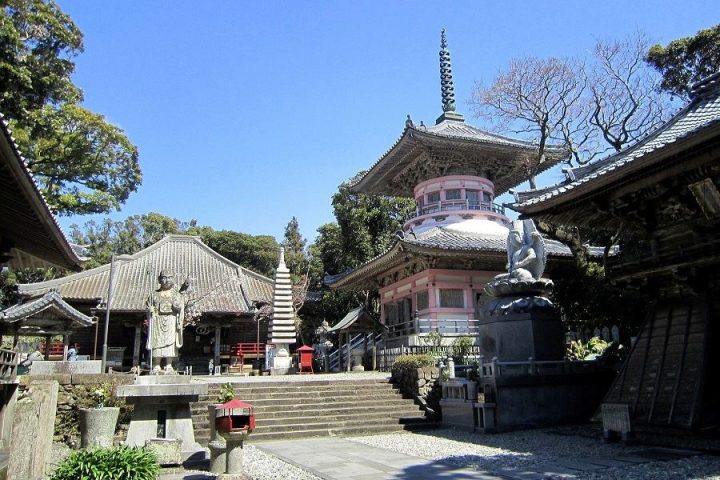
Murotomisaki Lighthouse
Below Hotsumisaki-ji Temple is a lighthouse, built in the Meiji period. Despite attempts to disguise it during WWII, its lense was damaged by strafing and the current lense is a more recent type. When it stops rotating, it’s always aligned east-west to prevent damage by the sun.
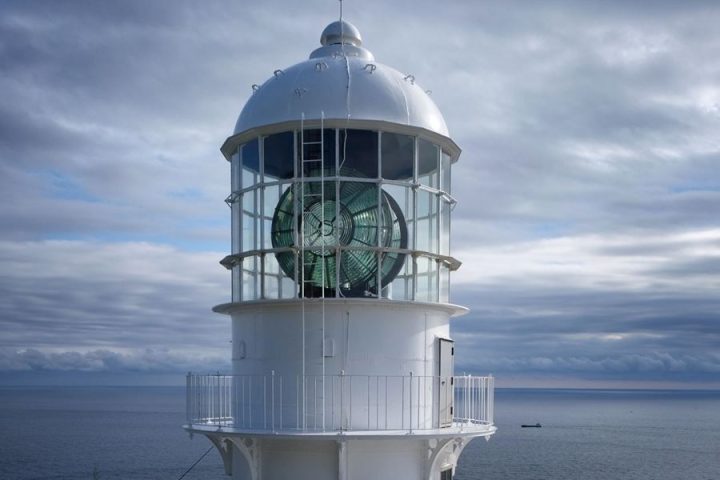
Eating out in Muroto
Kōchi is known as the prefecture with the highest consumption of alcohol in Japan, and the people of Kōchi never miss an opportunity to drink together. But in Japan, drinking usually involves eating too, and the food in Kōchi in excellent. I had dinner at an izakaya in Muroto, and I was delighted by how good everything was.
One of Kōchi’s specialties is tataki, of which the best known is katsuo tataki, bonito seared over burning straw so that the outer part is lightly charcoalized while the majority is raw. This is typically served with raw onions or garlic and soy sauce or ponzu. This time I had it served in roll sushi with chunks of garlic. The combination of fresh, raw bonito, aromatic charcoal, rice, nori seaweed and garlic was perfect. Even when I was full, I wanted to eat more!
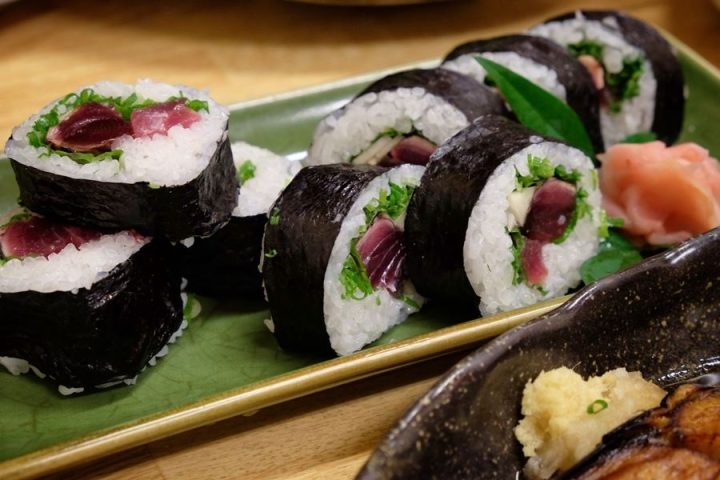
Another dish often served in Kochi is aonori tempura. This aromatic green seaweed fried in light batter is quite chewy. Typically, aonori is encountered as a seasoning or condiment, and so eating it in large pieces like this feels extraordinarily indulgent.
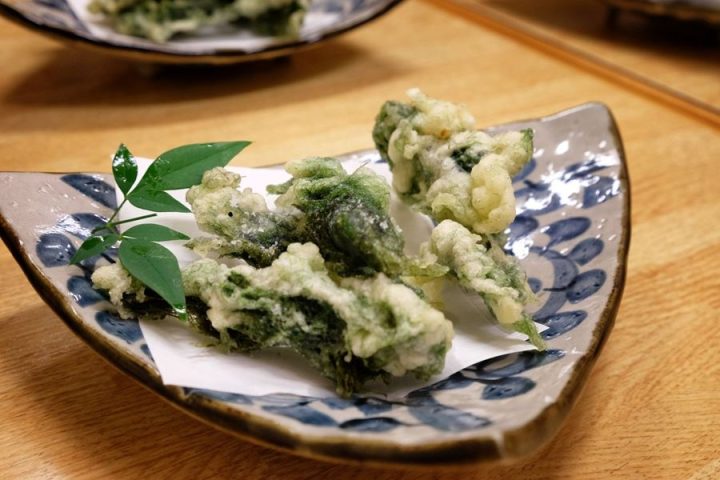
Tempura is a favourite of mine, and I was intrigued to encounter a new type to me, hama-azami or beach thistle. This weed grows on beaches in Muroto and you’d happily walk all over it, but cooked in batter, its root has a crunchy texture and a delicate but earthy and sweet flavour.
The Muroto Peninsula enjoys relatively warm weather year-round, and winter aubergines are grown in greenhouses here. Baked and served with green peppers and seasonings, these large aubergines are a welcome reminder of summer.
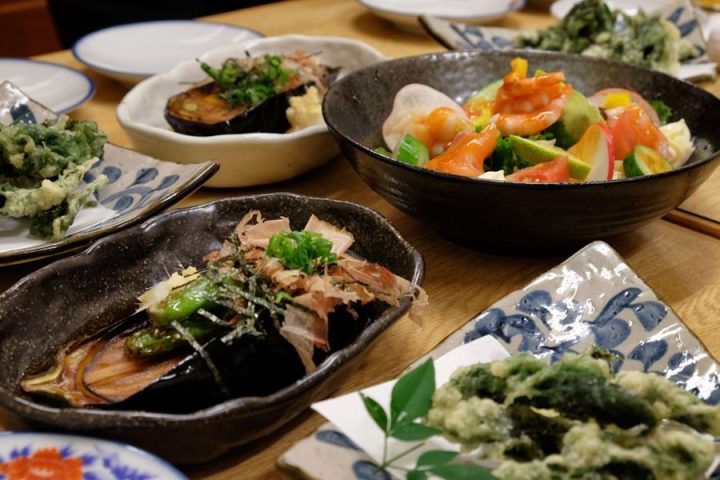
A peculiarity of the sea floor to the southeast of Muroto Peninsula creates an ideal environment for a fish called kinme. It’s a large red fish with big golden eyes, and it lives at a depth beneath which most fishing is conducted. It’s highly prized for its dense, sweet flesh and the fat which is distributed evenly in its meat. Recognizing that the kinme is a unique resource of Muroto, twelve local restaurants agreed to produce a unique donburi dish featuring the fish. It goes really well with sake, so be sure to order a glass.
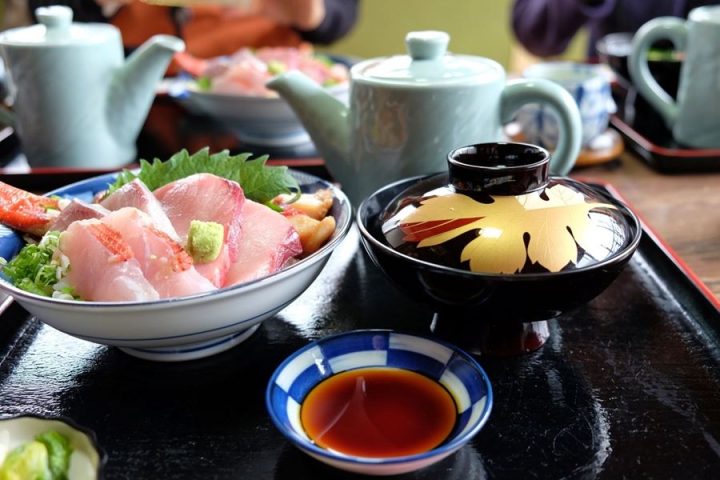
It’s necessary to stay at least one night in Muroto if you hope to enjoy all of the fascinating things to see and do here.
Related Tours

Experience the most beautiful and interesting temples of the Shikoku Pilgrimage in seven days.

A tour for families or friends, staying in the most characterful kominka and ryokan of Shikoku.

Visit the most beautiful and interesting temples of the Shikoku Pilgrimage and walk the toughest trails.

